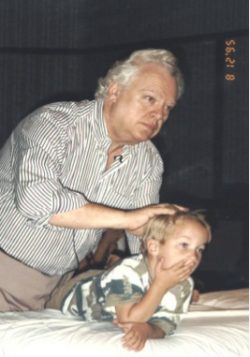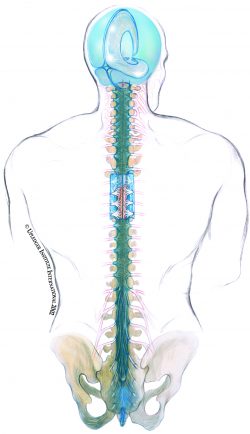
A hands-on therapy with a gentle touch
CranioSacral Therapy (CST) is a hands-on therapy, where the touch is gentle, non-invasive and usually subtle. Sometimes people even wonder if we are doing anything at all… But do not be fooled! It can have a powerful effect on the central nervous system and can help to improve how the whole body functions.
You lie on the treatment table and a practitioner places their hands gently on your body – usually starting at the feet. They are feeling for some of the deeper rhythms in the body, how flexible your body’s tissues are and whether anywhere in particular is shouting for attention.
Sometimes that place may be where your symptoms are, other times the root of an issue may be somewhere else and so they may start to treat elsewhere – our bodies can be very clever in how they adapt to stresses and strains and the injuries we have received in life. The practitioner will move their hands to different places during a session, usually including the head and the bottom of the back at some point.
At the very least you will feel relaxed and able to go more deeply into yourself. Sometimes they may ask questions and help you explore aspects of what may have happened in the past and what it all means to you now. You are always the one who is guiding the session though.
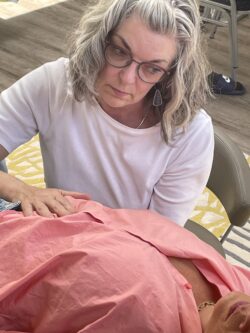
Treatments are done on a clothed body, with the receiver usually lying on their back on a treatment couch. If this is not comfortable, we may have an adaptable couch, treat people on their side or even sitting, if need be.
Cranio…? Sacral…?
Cranio refers to the head (cranium) and sacral to the bone called the sacrum at the bottom of the back. But we may also work anywhere in between as everything is connected… via the nerves of the spinal cord, vessels, connective tissue such as fascia…
Our hands may be encouraging movement, like gently flushing more fluid through a slightly sticky pipe, or they may use gentle techniques to unwind kinks in the body’s fascia (its internal ‘stocking’) – sort of like straightening out a sleeve or sock that isn’t on quite squarely! Sometimes they just sit and hold the space for what the body needs to do for itself.
An important part of our approach, from our osteopathic origins (and like many other bodywork traditions), is that our bodies have an inherent ‘self-healing mechanism’. We will often call it something like the ‘inner physician’ or inner wisdom. Whatever you want to call it, it is the part of you that knows what needs to happen. So we are not trying to figure out what is wrong and fix any above mentioned kinks or how to help the fluid to flow; we let the body show us, and do our very best to follow its lead.
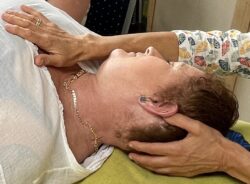
Treatments usually last 45 mins to an hour, although there are occasions when you may organise longer sessions with your therapist ( even multihands or intensive treatments). Appointments for babies and small children are usually shorter, typically 20 – 30 minutes.
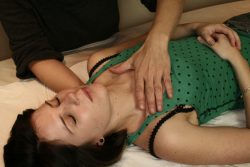
How will I feel afterwards?
Can you describe how you feel after a hug?
A great evening with friends? Or a hot bath after a stressful day? It depends on a few variables and is hard to put into words…! Typically, you will feel relaxed both during and after a session, though some sessions may feel very different from others and all bodies are different. Afterwards, you may feel very energised and raring to go, or you may feel tired and want to rest. It is entirely dependent on you and the way your body responds to what changed. Ideally you would be able to arrange your day to allow for any of these responses!
Who Benefits?
From newborns to the elderly, and for all sorts of issues…
Because CST is, in its essence, about a way of connecting with another person, really, it is for anyone – there are also some practitioners who also work with animals (of varying sizes!). It is quite beautiful to treat newborns whose systems may have simply become a bit misaligned during their nine months in utero or from that sometimes challenging birth process, and the speed and efficiency with which they self correct is seemingly miraculous; it is also fantastic to work with older folk who want to keep their fascia and their functioning as top notch as possible. Used for maintenance of general health or regularly for more chronic problems, it is also something you can return to over long periods of time.
We have found over the years that there are many issues and problems that respond very well to the touch of CranioSacral Therapy. When changes can be made in the soft tissue structures housing the brain and spinal cord, in the rhythm that comes from the production of the fluid that surrounds the central nervous system and in the levels of tension held in any area, we have seen some, apparently miraculous, changes in people’s health and symptoms.
What can it help?
That said, there are lots and lots of different reasons why people seek out CranioSacral Therapy. Mostly because it has been recommended to them by someone else (often with the proviso: ‘I’m not quite sure what they do but it really helped my x, y, z’!).
It can be effective for a wide range of problems associated with discomfort, pain and dysfunction, not least because it is typically so relaxing to receive and this in itself complements and stimulate the body’s natural healing processes. In fact, as well as helping what you came for, you might find ignored, hidden or even forgotten problems are often resolved as well.
CST techniques influence movement and coordination, pain pathways, the digestive system, the respiratory system, heart function, the endocrine system… potentially the majority of the body systems. It hones in on areas that are holding tension, injury and even emotions helping to release whatever the body needs, and is ready, to let go of.
People often ask ‘how many sessions will I need?’. We can never answer that question as their body is the one that knows. I’ve been getting treatment for 25 years and am still enjoying and benefitting from getting more!!
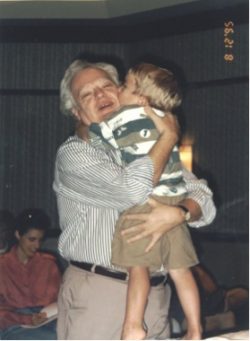
Dr Upledger would ask:
‘Tell me, where does the mind end
and the body begin?’
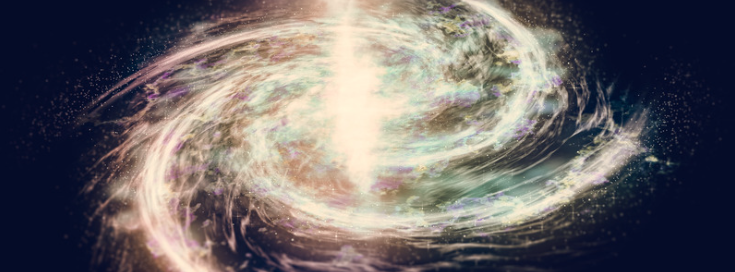
Learning and receiving CST is like I’m opening a new universe...
Can you give me a bit more? What are you actually treating?
(skip this bit if you don’t need any nitty gritty…)
We are aiming to treat the craniosacral system. This is the term that was coined to describe the structures that produce and enable the craniosacral rhythm. The what? The rhythm that is created from the production and reabsorption of cerebrospinal fluid. Dr Upledger first observed this when he was assisting in a spinal surgery. (He was trying to hold a structure called the dural tube still while a colleague operated, but he couldn’t as it was moving all by itself! Find out more about that in our History.)
He later found that cranial osteopaths were working with something similar and eventually called this rhythm the craniosacral rhythm and saw it as being created within the craniosacral system: ie the structures that enable this to occur. These are the meningeal membranes that surround and support the brain and spinal cord, the bones of the head and vertebral column (including the sacrum) to which they attach and the cerebrospinal fluid that surrounds and protects the brain – beautifully illustrated in the image here.
Ideally, the bones and fascia are all well aligned, the fluid can flow round the brain and spinal cord easily and the rest of the body is not having any less-than-optimal impact on this system (the fascia and nerves affect this system as much as they influence the rest of the body). But, life happens, from in utero onwards, and this system may not be as well aligned and flowing as it could be.
CranioSacral Therapy will work to gently adjust any misalignments so the system is as free and flowing as it can be so we function as optimally as we can.
OK, so what is SER™ then?
Ever had the experience of a therapist working with you and you suddenly feel emotional, or have an unexpected memory appear, or see an image or something that reminds you of a time / place / event? As odd as it may seem if you have not had this happen, if it does, we view it as that inner wisdom communicating. So it would be rude not to listen right?
So this is where we may ask you about what is going on for you. We may ask some questions to help you elucidate what the image means for you, what happened or what you are feeling. Again, this is totally guided by you and however much you want to explore the experience.
It is still the case that most healthcare approaches separate mind and body – you can have either physical therapy or psychotherapy. This way of working emerged from the many years Dr Upledger spent working with people, and him noticing that some physical symptoms would not fully release and heal until an emotional component was taken care of too. Seeing a link between the physical tissue and emotional and mental aspects, he began to draw on a few different avenues of mind and body work and use ideas from those approaches to help clients link it to what he was feeling in listening to and following the body’s tissue releases.
The process gradually developed into what he called SomatoEmotional Release™ (SER™)
SomatoEmotional Release™ is…
an elegant way of working with the body-mind to help release emotional issues or memories within its tissues (‘somata’ – Greek for body)
It is still CranioSacral Therapy!
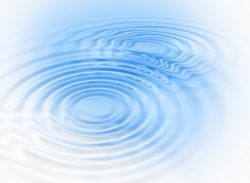
SER in Practice…. Still CranioSacral Therapy!
How this appears in the work that we do is that during a treatment your practitioner (if they have gone far enough in the training to be confident with this) may at some point ask about how you are feeling, what you are sensing, what is happening in your body in that moment.
There are a few key signs that suggest to us there may be an emotional component to where we are working in that moment, and by following this we have clues as to how to keep this process on track and ensure it is helpful. It’s like the emotions got ‘stuck’ in the tissue at some point – maybe it was not safe for us to express them at the time or maybe we didn’t even know how to. Whatever the reason, when we are holding onto too much, it can contribute to or create physical dysfunction. In a session where we feel safe and supported, the body can begin to let go.
Bringing awareness, understanding and sometimes a different perspective to our life story, SomatoEmotional Release® can facilitate huge change. This can occur in a myriad of ways and is frequently gentle and creative, as we listen and follow both mind and body.
SER® facilitates personal growth, helps us move from illness, unresolved issues and lack of potential, towards health. Our CST tools combine to work alongside all aspects of our nature – physical, mental, emotional and spiritual – and in the right hands (!) become an ingenious tool for sorting out our lives and redesigning our futures.
Listen
Listen to the fragile feelings,
not to the clashing fury…
to the quiet sounds,
not to the loud clamour…
to the steady heartbeat,
not to the noisy confusion…
to the hidden voices,
not to the obvious chatter…
to the deep harmonies,
not to the surface discord….
from A Prayer at Night
Jim Cotter 1983
with kind permission
What Can You Expect from Our Practitioners?
From a 10-Step protocol to unique ways of following the whole body
Practitioners who have trained with us at different levels will use different elements of the total offering that is a CranioSacral Therapy treatment.
At CST1 and 2 levels, our practitioners are able to complete a 10-step protocol and some specific mouthwork techniques that listen and follow the body and the tissues.
Further classes enable practitioners to gain learn more about in locating the source of problems, symptoms and areas that may be holding issues. Through initiating a dialogue with you, your tissues and any emotional issues that may be held within and compromising function.
At an advanced level, we may have studied additional areas of physiology or anatomy, but the principles of treatment – listening to and following the body, and understanding that it knows exactly what it needs to do – remains the core ethic and approach of our treatments.
Many practitioners also integrate the techniques we use with what they do in another core therapy, if that is not CST – always ask your practitioner about their work – we are really happy to share and tell you about the approach.
Try it Out!
So whether you are looking to receive treatment for yourself or are a healthcare practitioner looking to expand the work that you offer (or both) you will find that CranioSacral Therapy can help with many conditions. Please contact a practitioner near you to find out more about a particular set of symptoms you may have, but please know we can not always say what will help without getting our hands on to feel what is going on in your body from the craniosacral system’s perspective.
Find a Therapist
Please also be aware that we do not make any diagnoses about medical conditions, unless we are otherwise qualified to do so and that level of medical ability is within our other scope of practice. We also highly recommend that anyone with a medically diagnosed condition, choosing to use CranioSacral Therapy, does so with the full knowledge and cooperation of their medical specialist.
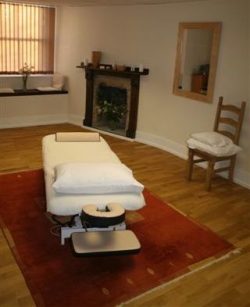
That’s all cool, and actually I’m interested in becoming a CranioSacral Therapist!
Awesome! In which case please choose the most appropriate pathway:



